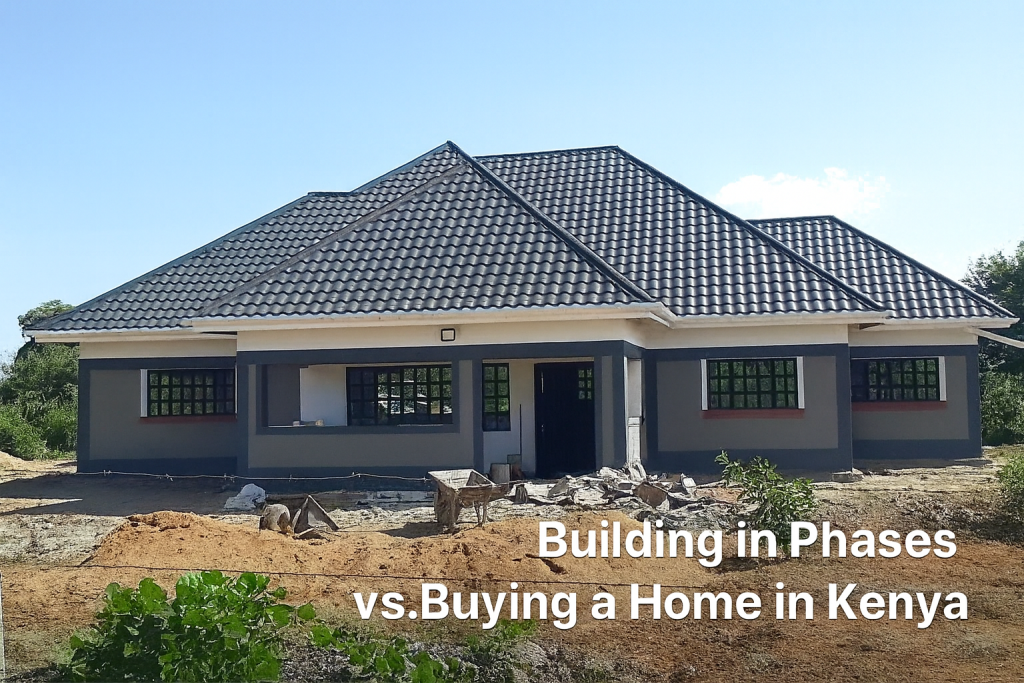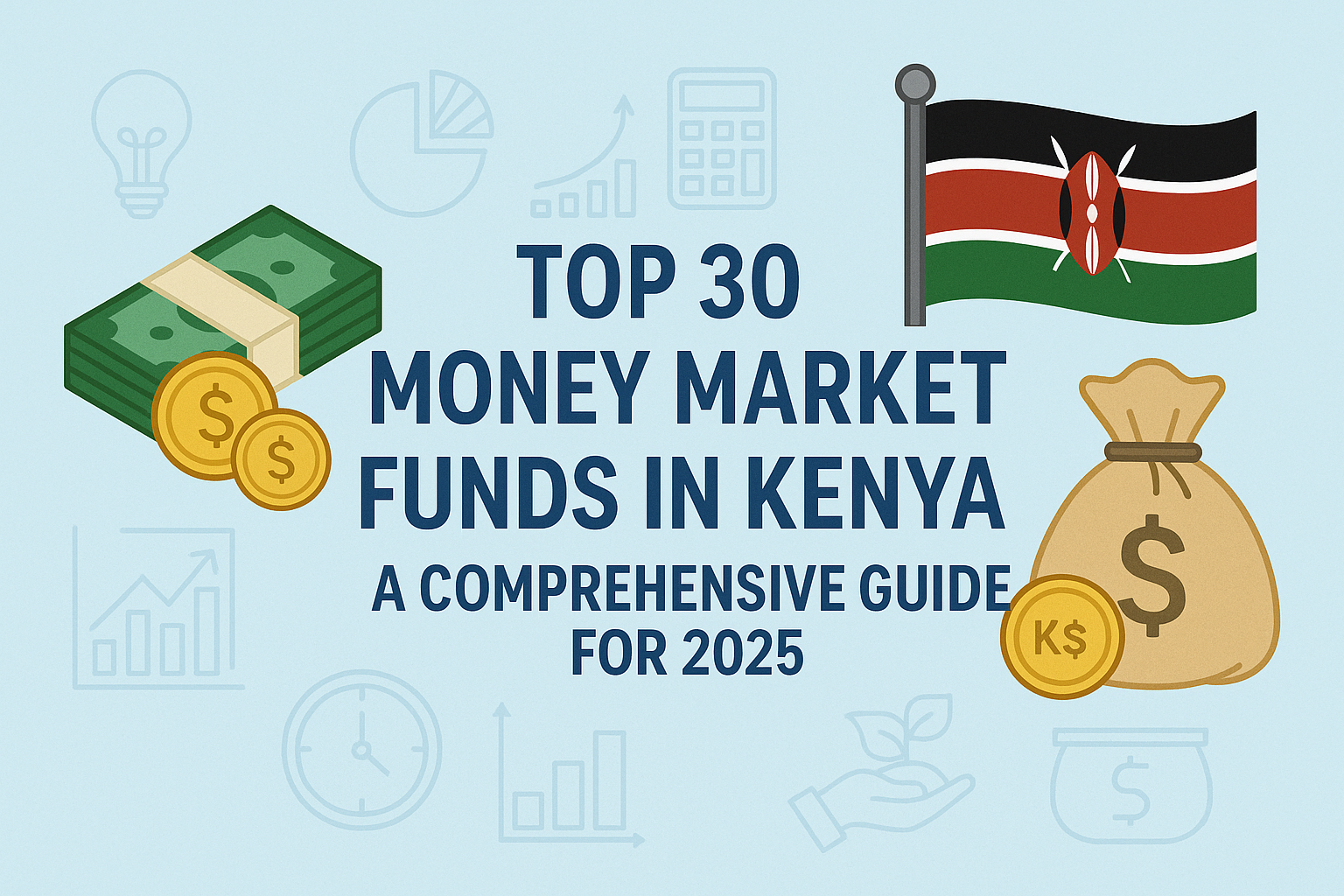Kenya’s real estate sector has grown significantly over the past two decades, with both urban and rural areas witnessing a surge in housing development. This growth has given aspiring homeowners two main options: building a house (sometimes in phases) or buying a ready or off-plan home.
Each option has financial, emotional, and lifestyle implications. For many Kenyans, the decision boils down to cost: Which approach is more economical?
This blog takes a deep dive into the pros and cons of each approach, analyzing cost structures, timelines, hidden expenses, and long-term value, while also considering Kenya’s unique market realities such as fluctuating construction costs, land prices, and access to financing.
Understanding the Two Approaches
Building in Phases
Building in phases is a common strategy in Kenya, especially for middle-class families. It involves starting with essentials — purchasing land, setting up the foundation, walls, and roofing — then gradually adding finishes, extensions, or even extra floors as funds allow.
This method spreads out the financial burden, reduces reliance on heavy borrowing, and allows homeowners to customize the home according to taste and lifestyle.
Buying a Ready or Off-Plan Home
Buying a house means acquiring a finished property from a seller, whether it is a second-hand house or a newly developed unit. Off-plan purchases — where buyers pay in installments during construction — are also popular, especially in Nairobi, Mombasa, and Kisumu.
Buying is attractive because of the convenience of moving in quickly and avoiding the stress of managing construction projects.
The Kenyan Housing Market Context
Before weighing the two, it’s important to consider Kenya’s real estate landscape:
- Land scarcity in cities: Land prices in Nairobi, Kiambu, and Mombasa have skyrocketed. In many cases, land alone can cost more than an entire finished home in rural areas.
- Construction inflation: Cement, steel, and timber prices fluctuate frequently, pushing many builders to stall projects.
- Financing limitations: Mortgage uptake remains very low in Kenya (less than 30,000 active mortgages nationwide), forcing many families to self-finance.
- Lifestyle needs: Younger buyers often prefer ready houses for convenience, while older generations may prefer building gradually for control and customization.
Cost Comparison: Building in Phases vs Buying
Upfront Costs
- Building in Phases: Requires significant initial costs for land purchase, approvals, and foundation. But subsequent stages can be spread over months or years, easing financial pressure.
- Buying: Requires a lump sum or structured payments. For mortgages, buyers must raise 10–20% deposit plus transaction costs.
Total Cost Over Time
- Building: Inflation may increase costs if construction drags on. Labour inefficiencies, theft of materials, and contractor mismanagement also inflate expenses.
- Buying: Usually predictable; developers or sellers set a fixed price. However, buying older homes may lead to hidden renovation costs.
Customization and Quality
- Building: Offers maximum control — choice of design, finishes, and materials. However, it requires active supervision to ensure quality.
- Buying: Limited customization. For off-plan purchases, you may choose finishes, but structural design is usually fixed.
Advantages of Building in Phases
- Flexibility of Financing: You pay as you go, without overstretching your budget.
- Control over Quality: You choose contractors, materials, and design.
- Sense of Ownership: Watching your dream home take shape step by step brings pride.
- Potential Cost Savings: If managed efficiently, building can cost less than buying ready-made houses, especially in non-prime areas.
- Room for Expansion: Houses can be extended later if the design accommodates it.
Disadvantages of Building in Phases
- Inflation Risks: Delays often mean higher material prices.
- Hidden Costs: Repeated mobilization of workers, storage, or theft of materials increases costs.
- Stressful Management: Supervising contractors, approvals, and compliance with local authorities can be exhausting.
- Longer Timelines: You may live in incomplete conditions for years.
- Land Cost Burden: In prime areas, land may be unaffordable, negating the cost advantage.
Advantages of Buying a Home
- Convenience: Move in immediately without construction stress.
- Predictable Costs: Fixed purchase price; fewer surprises if buying from reputable developers.
- Time Savings: No site supervision or project management.
- Location Advantage: Developers often build in prime areas where individual plots are scarce.
- Potential Appreciation: Buying off-plan at a lower price can yield value once the project completes.
Disadvantages of Buying a Home
- Higher Upfront Cost: Significant initial outlay required.
- Limited Customization: The house may not perfectly match your taste.
- Hidden Flaws: Older houses may have structural or maintenance issues.
- Developer Risks: Some off-plan projects stall or collapse due to poor management.
- Premium Pricing: Developers factor in profit margins, making buying more expensive than self-building in many areas.
A Practical Example
Building Scenario
- Land in Kitengela: KES 2.5M
- Foundation and walls: KES 1.5M
- Roofing: KES 1.2M
- Finishes: KES 1.8M
- Total: ~KES 7M over 3–5 years
Buying Scenario
- 3-bedroom maisonette in Kitengela: ~KES 8.5M–10M depending on estate and developer.
Observation: Building in phases appears cheaper if you already own land, but buying may be faster and sometimes more economical if land costs are high.
Non-Financial Considerations
- Lifestyle Needs: If you need a home immediately, buying is the only practical option.
- Patience and Oversight: Building requires constant follow-up.
- Emotional Satisfaction: Building gives a stronger sense of achievement.
- Family Needs: Multi-generational families may prefer larger custom builds.
The Role of Financing
- Mortgages: Rare in Kenya but useful for buying finished homes.
- Saccos and Chamas: Often fund phased building.
- Personal Savings: Commonly used for both approaches.
Financing availability often dictates the choice.
Tips for Building Economically in Phases
- Plan Holistically: Design the entire house upfront, even if building gradually.
- Secure Reliable Contractors: Poor workmanship increases costs long term.
- Buy Materials in Bulk: Hedge against inflation.
- Prioritize Essentials: Focus first on structure and roofing to secure the property.
- Avoid Long Delays: Try to complete each phase quickly.
Tips for Buying Economically
- Vet Developers Thoroughly: Check their track record.
- Consider Off-Plan Purchases: Often cheaper but ensure legal safeguards.
- Negotiate Aggressively: Prices are not always fixed.
- Inspect Carefully: Check for defects before paying.
- Factor in Transaction Costs: Stamp duty (4% in cities, 2% in rural), legal fees, and valuation fees can add up.
Comparative Table: Building in Phases vs Buying in Kenya
| Aspect | Building in Phases | Buying a Home |
|---|---|---|
| Initial Investment | Low (after land purchase) | High |
| Total Cost | Potentially cheaper if managed well | Higher (includes developer margin) |
| Inflation Risk | High if delays occur | Low (price fixed) |
| Customization | Full | Limited |
| Timeline | Long, uncertain | Immediate |
| Financing | Flexible, incremental | Mortgage or lump sum |
| Stress Level | High (management needed) | Low |
| Location Options | Where you can buy land | Often prime, serviced estates |
Conclusion
So, which is more economical: building in phases or buying a home in Kenya?
- Building in phases is generally cheaper if you already own land and can manage the project efficiently. It allows customization, spreads out costs, and gives emotional satisfaction. However, it carries risks of inflation, delays, and stress.
- Buying a home is more expensive upfront but offers convenience, time savings, and certainty. For those who value speed and predictability — or cannot handle project management — buying may actually be the more economical choice in terms of time and hidden costs.
Ultimately, the best option depends on your financial position, patience, and long-term goals. If you are budget-conscious and willing to supervise construction, building in phases can save money. If you prefer certainty and immediate comfort, buying is the smarter path.
Frequently Asked Questions (FAQs)
1. Is it cheaper to build a house in Kenya than to buy one?
Yes, in most cases building your own house can be cheaper than buying a ready home, especially if you already own land. However, the final cost depends on the location, the quality of finishes, and how efficiently you manage the project. Buying may cost more upfront because developers add profit margins, but it saves you from construction stress.
2. What are the risks of building a house in phases?
The main risks include rising material costs due to inflation, theft or wastage of building materials, and project delays caused by lack of funds. If construction is not well managed, the total cost of phased building can end up higher than expected. Proper planning and supervision are key to avoiding these pitfalls.
3. Can I get a loan to build a house in phases?
Yes. Many Kenyan banks, SACCOs, and microfinance institutions offer construction loans. However, lenders usually prefer to fund projects with clear timelines and full architectural plans. SACCOs are often more flexible, allowing members to borrow in stages.
4. Is buying an off-plan home safe in Kenya?
Buying off-plan can be economical, but it carries risks. Some developers fail to deliver on time or abandon projects altogether. To reduce risk, always verify the developer’s track record, check approvals with county authorities, and involve a lawyer in the agreement.
5. Which is better for investment: building or buying?
For long-term investment, buying ready homes in prime estates can generate faster rental income. Building, on the other hand, is better suited for personal homes or if you already own affordable land. Investors should weigh rental yields, resale value, and location before choosing.



